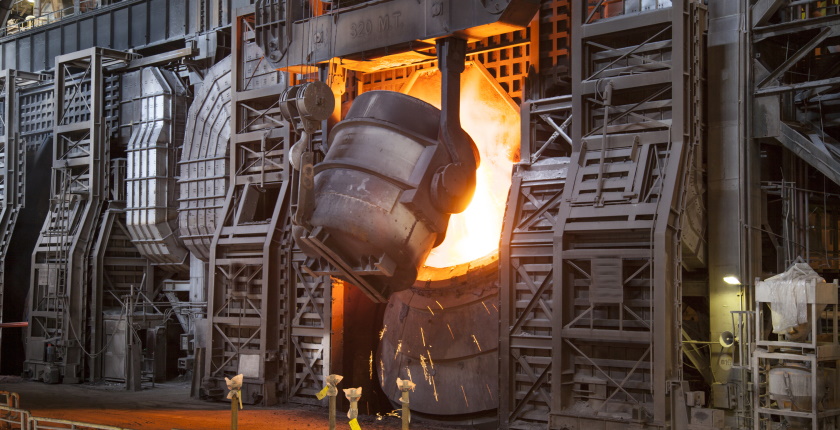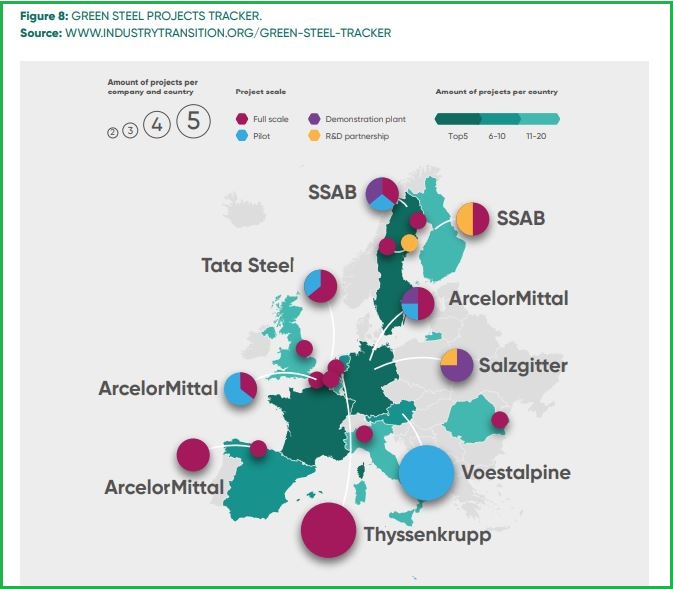
Photo: iStock
Switching an average European steel plant to green hydrogen requires from EUR 3.3 billion to EUR 7 billion of capital investment depending on whether renewable energy production is variable, according to Hydrogen Europe’s report Steel from Solar Energy.
Steel is among the sectors that are the most difficult to decarbonize, together with chemicals, cement and transport. It could be said that the success of the energy transition depends on their decarbonization.
To compare the volume of investments needed for the switch to green steel, the sector’s annual turnover is EUR 166 billion, according to data from the European Commission from 2016. There is more then 160 steel production sites in the EU.
Hydrogen Europe conducted the analysis to assess the viability of using solar energy (and renewable energy in general) for the decarbonization of steel manufacturing, which is responsible for around 4% of greenhouse gas emissions in Europe. The report focuses on hydrogen-based direct reduction of iron ore coupled with an electric arc furnace (H2-DRI-EAF), by comparing the levelized cost of steel with the blast furnace – basic oxygen furnace (BF-BOF) benchmark.
370 TWh of additional renewable energy is needed
Switching all BF-BOF plants in the EU to hydrogen-based DRI/EAF would require up to 5.3 million tones of renewable hydrogen and up to 370 TWh of other renewable electricity generation, including electricity consumption of electric arc furnaces, the document reads.
Converting a single steel plant with a capacity of four million tonnes of crude steel per year (EU average) would require 1.2-1.3 GW of electrolysis running at full load, EUR 3.3 billion EUR of capital investment (including EUR 1.2 billion for electrolysis), between 10.2 and 21.7 hectares of land for the electrolysis plant, and additional area for new renewable power deployment.
If variable renewable electricity is used and the electrolyser cannot be operated at constant full load, the challenge becomes even bigger.
When using exclusively solar PV for hydrogen production, the required electrolysis power would grow to around 4,5-5,0 GW, driving up the required CAPEX to almost EUR 7 billion for a single plant of average capacity, according to the analysis.
Green hydrogen production costs would be equal to the BF-BOF benchmark by 2025-2030
 The analysis is conducted using two distinct price development scenarios: high prices scenario – assuming current high energy prices, and adjusted prices scenario – with energy prices adjusted down to reflect potential long-term fossil fuels price levels.
The analysis is conducted using two distinct price development scenarios: high prices scenario – assuming current high energy prices, and adjusted prices scenario – with energy prices adjusted down to reflect potential long-term fossil fuels price levels.
With an estimated current hydrogen delivery price (including production, transportation and storage) of EUR 5,3 per kilogram, total green steel production costs are higher than the BF-BOF benchmark both in the high and adjusted price scenarios, with the difference being 126 EUR and 203 EUR per tonne of crude steel, respectively.
Capital expenditure on electrolysers is expected to fall by around ¾ from current levels
However, capital expenditure on electrolysers is expected to fall by around ¾ from current levels, which lowers the price to EUR 1.5 per kilogram by 2025. If green hydrogen production costs decrease as predicted, by 2025-2030 it should be possible to eliminate the cost gap entirely, the document reads.
According to the estimate, in order for the project to break even, the hydrogen delivery price would have to be below EUR 3 per kilogram with high prices and below EUR 1.5 per kilogram in the other scenario.
Securing storage is also a challenge
In addition to the scale and costs, the third highlighted challenge is to provide a constant supply of hydrogen to the reduction shaft.
When hydrogen production is based entirely on variable renewable energy, like solar PV or onshore and offshore wind, a significant amount of operational storage is needed, the authors concluded.
Underground hydrogen storage in salt caverns offers a cost-effective solution, but they are not available across the whole EU.


















Be the first one to comment on this article.